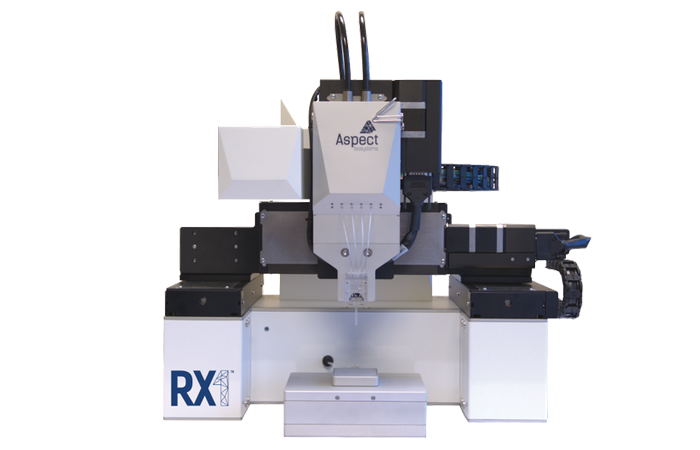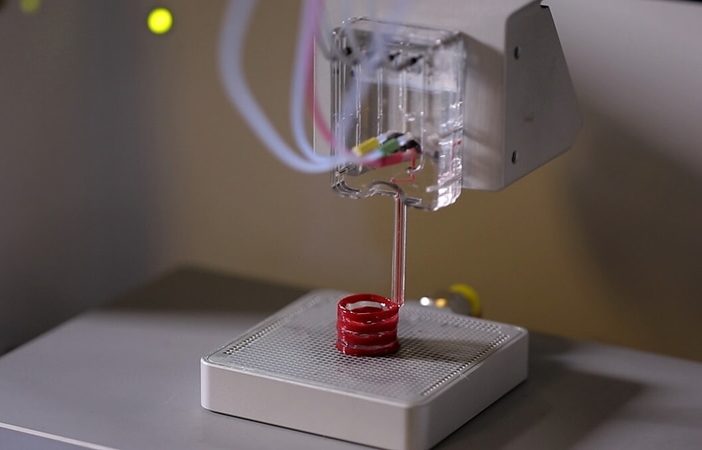Canadian 3D bioprinting company Aspect Biosystems has launched a new grant program whereby the selected applicants will be supplied with the company’s proprietary RX1 bioprinters.
The developer of the Lab-on-a-Printer™ specializes in forming functional tissues by harnessing the power of microfluidics. The company’s ultimate aim is to use bioprinted therapeutics to heal musculoskeletal and metabolic disorders and diseases, with the grant program serving to heighten the accessibility of 3D bioprinting to the world of research.

The Aspect program
Through the program, two research labs will each be receiving an RX1 bioprinter, a starter kit, and the necessary training from the Aspect team with no expenses over a six month period. Applications for the printer are open from now until October 16th.
In order to be eligible for the program, applicants must be conducting research at either a university or a non-profit research institute at the time of application. Projects that involve clinical trials or humans will not be accepted. The selection criteria are based on several factors, starting with scientific merit, whereby the quality of the project itself will be judged. A “cool factor”, or novelty, is also highly recommended. Ultimately, the feasibility of the project will also be taken into consideration when selecting candidates.

The RX1 bioprinter and microfluidics
According to Aspect, microfluidic technology, at its core, enables “the switching between different cell types on the fly”. The layer by layer deposition of the generated living fibers is used to rapidly and accurately build heterogeneous tissues.
The company’s research is made possible by its RX1 microfluidic bioprinter. The machine is capable of producing realistic physiological structures such as human tissue, producing regenerative medicine, and aiding in drug delivery applications.
What is different compared to other bioprinting technologies is that microfluidic print heads do not rely on predefined bio-inks. This means that the system can “manipulate multiple source materials from living cells to precisely generate and deposit a broad spectrum of cell-loaded bio-materials”, states Sam Wadsworth, Co-Founder of the company.
Bioprinting and Aspect Biosystems
A way in which the company has previously applied its technology is by using bio-printed tissue to recreate an asthma attack. The engineers achieved this through the use of the 3DBioRing AIRWAY, a bioprinted tissue that physically imitates the acute bronchoconstriction events noted during an asthma attack.
In January 2020, the company also closed a $20 million Series A financing round, enabling it to advance its technology in the 3D bioprinting of human tissue. The firm aims to use this capital to eventually closely replicate natural human matter on demand. Currently, Aspect Biosystems is also undertaking a $2.2 million cancer drug development project. Its role is to create 3D bioprinted tissues which will then be used by researchers to assess the efficacy of anti-cancer drugs and so predict the patient’s response to cancer treatment.
The 4th annual 3D Printing Industry Awards are coming up in November 2020 and we need a trophy. To be in with a chance of winning a brand new Craftbot Flow IDEX XL 3D printer, enter the MyMiniFactory trophy design competition here. We’re happy to accept submissions until the 30th of September 2020.
Subscribe to the 3D Printing Industry newsletter for the latest news in additive manufacturing. You can also stay connected by following us on Twitter and liking us on Facebook.
Looking for a career in additive manufacturing? Visit 3D Printing Jobs for a selection of roles in the industry.
Featured image shows the RX1 Bioprinter. Image via Aspect Biosystems.


